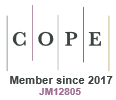Just Accepted
This article has been peer reviewed and accepted for publication. It is in production and has not been edited, so may differ from the final published form.
Ovarian culture with mouse serum improves follicle development compared to fetal bovine serum revealing the importance of as yet unidentified factors in follicle growth.
Abstract
Context: For survivors of childhood blood cancer, fertility preservation through ovarian tissue cryopreservation (OTC) and reimplantation is not recommended due to the risk of reintroducing malignant cells. Since a robust in vitro ovarian tissue culture system does not exist for humans, new approaches are needed. Aims: To investigate new approaches to in vitro follicle growth, our aim was to determine whether mouse serum (MS) could support follicle development better in mouse ovaries in vitro compared to fetal bovine serum (FBS). Methods: Neonatal ovaries were cultured for 14 days in either MS or FBS. Follicle development and health were assessed by histological and molecular analyses. AMH and laminin were analysed using immunohistochemistry. Key results: MS supported the development of primordial follicles to preantral follicles whereas those in FBS did not develop beyond primary. Ovaries cultured in MS had fewer atretic follicles than FBS (p<0.05). There were more AMH-positive follicles in MS cultured ovaries than FBS (p<0.05), more primary follicles that were AMH-positive (p<0.05) and, AMH-positive primary follicles contained more AMH-positive granulosa cells than those cultured in FBS (p<0.05). Finally, ovaries cultured in either MS or FBS contained laminin, however, the follicle basal lamina (FBL) of follicles in MS ovaries were more defined. Conclusions: MS better supported follicle development, health, and function than FBS indicating that MS contains additional factors important for follicle development in mice. Implications: These findings demonstrate that as-yet-unknown factors exist that are important for in vitro follicle development, and we need to define them, and explore the role of these molecules in human studies.
RD24178 Accepted 22 May 2025
© CSIRO 2025



